The Ecological Society of America held its annual meeting this year in Fort Lauderdale, Florida. The conference theme was “Novel Ecosystems in the Anthropocene.” I’ve written about the “Anthropocene,” or alluded to it, in many stories I’ve posted here, most recently in “Another Visit with John Burroughs at Slabsides,” from May of this year. The term is proposed as the name for the current geological epoch, in which human activities are seen as dominating and damaging Earth’s ecosystems. I wasn’t privy to how that theme was chosen for this year’s meeting, or exactly how it linked to Florida, but I guess it had something to do with the fact that even though Florida has large tracts of public lands that are nominally protected in their natural state – Everglades National Park, Biscayne Bay National Park, and the Florida Keys National Marine Sanctuary, for example – these ecosystems are embedded in a human-dominated landscape of agriculture, cities, and intensive water management. And as far as “novel ecosystems,” the Everglades are home to many exotic invasive species, such as the Burmese python, and the reefs now host the lionfish, an invasive predator with poison-tipped spines from Asia. Looking down on the Fort Lauderdale marina from my hotel room, with its yachts cruising in and out, across to the highrise hotels on the beach, and only a five-minute walk from the giant Broward County Convention Center where the meeting was being held, it was easy to “feel” the conference theme. I was definitely in a weird, unnatural ecosystem in a human-dominated epoch in the long evolutionary history of life on Earth.
The annual meeting of the Ecological Society of America always energizes my work as an international ecological consultant. It gives me a chance to come up to speed on the cutting edge of ecological research on several topics with direct relevance to that work. The research is mostly being done by academic ecologists from universities, not applied ecologists working on the management of natural resources, conservation, or environmentally sustainable development. This is my chance to take their ideas and try to apply them in the complex and difficult situations I encounter in my consulting work.
One active area of ecological research at the moment is the relationship between biodiversity and ecosystem functioning. The topic is currently so “hot” that it has coined its own jargonesque abbreviation, and a number of sessions at this year’s meeting dealt with “BEF.” The research is so active that it is hard to summarize, or capture in a soundbite, but if there were one, it would be this: there is no doubt that ecosystems with more species have higher levels of ecosystem functions of all kinds, and a greater stability of those functions under stresses of all kinds.
OK, so what? Well, what that means is that in the Anthropocene, as we stress ecosystems in all kinds of ways – by causing a rapid change in the Earth’s climate and by spreading exotic invasive species around the globe, for example – we better watch out. Why? Because human societies, from the most so-called “developed” to the least, depend to an unrecognized and inordinate degree on the products and services we get from natural ecosystems, usually for free, with no inputs of our own.
All of this basic research on the relationship between biodiversity and ecosystem functioning, and the ecosystem benefits on which humans depend, has direct relevance and application to my day-to-day, applied ecological consulting work. It applies directly to the surveys of plants, birds, and butterflies in forest reserves in Malawi that I’m leading as a tiny “environmental compliance” component of a large loan to the Government of Malawi from the World Bank for water management in the Shire River Basin. It has direct relevance for crafting recommendations to the U.S. Agency for International Development in Guatemala about what their priorities for funding for biodiversity conservation and climate change adaptation in that country should be, another of my recent consulting projects.
——-
Humans and our fellow species are trying to adapt to the Anthropocene in south Florida. On the busiest beach at the epicenter of the Fort Lauderdale shoreline warning signs and net cages protected a few sea turtle nests. Signs along the coastal highway here warned that streetlights would be turned off to avoid lighting the beach and confusing nesting turtles. Seeing those nests on this Anthropocene beach, I realized how strong ancient biological urges must be. Can you imagine a turtle’s brain trying to interpret a highrise hotel looming above her nesting beach? The strength of those deep-time evolutionary urges are a hopeful counterweight to the ephemeral environmental changes our species is creating.
The ESA Public Affairs Committee, of which I’m a member, sponsored a luncheon talk that featured a local government official who has been involved in local environmental policy and planning that links with ecology. The speaker was Jennifer Jurado, Director of Environmental Planning and Community Resilience for Broward County, where Fort Lauderdale is located. Jennifer had a leadership role in developing the Southeast Florida Regional Climate Change Compact, which was signed by Broward, Miami-Dade, Monroe, and Palm Beach Counties in January 2010 to coordinate climate change mitigation and adaptation activities across county lines. In this they were fighting against the state government, which takes the position that climate change is not happening. Climate simulations, however, suggest that by 2060 sea level will rise by more than two feet in this part of Florida. Recent storm surges and tides have caused unprecedented flooding, and the area has been in a “hurricane drought” for many years, raising the prospect that when hurricane activity returns to “normal,” or to the even more extreme levels predicted by some climate models, the area is ripe for disaster. Although most of the climate change, sea level rise “adaptation” measures envisioned by the compact deal with “hard” infrastructure – seawalls, tidal gates on canals, and the like – a few acknowledge the importance of maintaining ecosystems because of their role as “green infrastructure” to protect the coast from storms, tides, and storm surges. Vegetated dunes, mangroves, and coral reefs are ecosystems that provide these natural ecosystem services. Although heavily-developed Broward County doesn’t have many of these ecosystems left, some of the other counties in the compact do, Jennifer said.
——-
After days of listening to dozens and dozens of 20-minute talks in the windowless, hyper-airconditioned meeting rooms of the Broward County Convention Center, I was dying to get out to see some of south Florida’s ecosystems. I’m a field ecologist at heart, and love nothing more than immersing myself in the nature of whatever place I’m in. In south Florida, “immersing” is exactly the right word: I went snorkeling on the reefs of the Florida Keys.
We got up early, had a hearty breakfast at Lester’s Diner in Fort Lauderdale, then drove south, circling west around Miami on Florida’s Turnpike and down Highway 1 to Key Largo. It was overcast and warm, with a light rain falling, when we arrived at John Pennekamp Coral Reef State Park.
John Pennekamp Coral Reef State Park was established in 1963,the first undersea park in the United States. It covers only Florida “state” waters, which by U.S. law extend three miles from the shoreline. The main reefs are slightly farther out, in the Florida Keys National Marine Sanctuary, which is managed by NOAA, the National Oceanic and Atmospheric Administration.Together the park and the adjacent part of the National Marine Sanctuary cover about 178 nautical square miles of reefs, seagrass beds and mangrove swamps. The park is named for the late John Pennekamp, an editor and columnist at the Miami Herald newspaper, whose efforts contributed to the establishment of Everglades National Park and what would become the state park.
We left the dock at 1:45 PM on the twin-hulled “Snorkel Express” for a four-and-a-half hour trip. The reefs are in fairly good condition here, according to our boat captain and boatman, with little coral bleaching, alien lionfish kept in check by a capture and removal campaign, and with some corals such as elkhorn recovering from previous damage and die-off.
We tied up to mooring buoys and snorkeled for about an hour at each of three different sites: Grecian Rocks, Dry Rocks, and The Horseshoe. Each site was a bit different, each with its own magic. At all of them the constellations of brightly-colored fish were dazzling. As on earlier snorkeling trips in Belize, the stoplight parrotfish (Sparisoma viride), a living rainbow of pastel blues, pinks, and yellows, was one of my favorites. At the second site, a bit more exposed to wind and waves than the first, forests of gorgonians – sea fans – swayed with the strong currents washing the reef, and schools of sergeant majors (Abudefduf saxatilis), with their yellow backs and vertical black stripes, hung in the sunny water at the outer rim of the reef where the water motion was strongest and the reef rose from a white sand bottom at about 40 feet. At The Horseshoe, elkhorn corals (Acropora palmata) were thriving, creating a complex 3-D structure, with hiding places in the “shade” of their rocky canopy where groups of fish huddled and fed.
Immersed in this otherworldly three-dimensional world, like a snorkelbird flying over a forest where the trees were corals and sea fans, and the fish were birds below me, I was mesmerized. By the third site I was addicted, and at the end of the last hour in the water I didn’t want to leave it to return to the Anthropocene. Clear turquoise water and bright fishes filled my dreams that night.
——-
Back at the meeting, a plenary talk by Jeannine Cavender-Bares of the University of Minnesota was especially interesting. The title was something like “Managing Planet Earth for Sustainability.” She talked about how her lab is using remotely-sensed, multi-spectral imagery to try to map, on a very large scale, the taxonomic and phylogenetic diversity of plants, and the “functional traits” or ecological functions they provide. This research has a long way to go before I can apply it directly in my consulting work, but I can see the potential, so this is something I’ll be following. But it was in the question period after her talk where a philosophical insight came up that resonated with the theme of the conference. Someone asked her: “Are you pessimistic? How can you be an optimist when we see all of this human-caused degradation of ecosystems, and of their functioning and the benefits they provide?”
Her answer seemed to take a step back to the “deep time” perspective that ecological science can also provide, and she answered: “Biodiversity is going to be fine! Life is going to be fine! It is just a question of whether we can persist in the system as it is adapting and changing. And probably, if we want to persist in the system, we will need to participate in its management.”
My own presentation at this year’s ESA took a dive into “deep time,” and was presented in a session on paleoecology on the last morning of the conference. I reported on the results of the analysis of the wood of a fossil tree from the Petrified Forest National Park in Arizona with an ancient fire scar. Working with an international research team, we found that just before the fire that scarred the tree 210 million years ago, a drought had occurred, as often happens in modern forests. The physiological and morphological response of this ancient conifer to the drought and fire was exactly parallel to that of modern conifers. Ecologically, the more things change, the more they stay the same.
In the deep time perspective, the Anthropocene is only a blip in the grand history of life on our lonely planet. There is a deep calm in that perspective, which was reinforced again and again by presentations at ESA 2016. Novel ecosystems? Life on Earth has been nothing but a progression of novel ecosystems, as the amazing creativity of evolution has responded to climate changes and stresses. Anything that our species can throw at the planet will still be well within the range of the crises and changes that life has survived many times. Life on Earth will survive us, and outlive us as a species, and nothing we can do will threaten that.
Sure, a global nuclear war and the “nuclear winter” it could cause might create a mass extinction event as large as the one at the end of the Cretaceous period when an asteroid impact apparently caused the extinction of the dinosaurs. It would probably cause the extinction of the human species, and so Earth could go on evolving, with the Anthropocene receding in the rearview mirror as a weird aberration in evolutionary history.
Humans will never escape being embedded in the ecological systems and functionings of Earth, and we will never “control” them. We can only hope to understand them a little bit, adapt to them, and, if we have wisdom enough, fit our economic and social systems into them. To think anything else is human “hubris,” that ancient tragic flaw that leads only to outcomes unforeseen and unwanted. The key question for us is, can our species survive ourselves?
Sources and related links:
- ESA Annual Meeting 2016
- Southeast Florida Regional Climate Change Compact
- John Pennekamp Coral Reef State Park
- Florida Keys National Marine Sanctuary
- School of sergeant majors (Abudefduf saxatilis). Source: Florida’s “Museums in the Sea.”
- Elkhorn coral (Acropora palmata). Source: Discover Life.
- Searching for a pre-fire drought signal in the wood anatomy of a fire-scarred fossil tree. Presentation at ESA, 12 August 2016.
For related stories see:
- An Interconnection of Ecologists: The Ecological Society of America’s 2012 Annual Meeting. August 2012.
- Searching the Black Forest for Fire Scars on Halloween. October 2013.
- Fire Scar on a Triassic Tree. November 2013.
- Belizean Blues. May 2014.
- Picnicking in Deep Time. June 2014.
- Breaking the Curse of Voodoo Economics and Designing an Ecological Economy. May 2015.
- The View from Zomba Mountain: Plants, Water, and People in Southern Malawi. June 2015.
- Time Travels in Alaska. November 2015.
- Pondering the Palms of Cape Hatteras. November 2015.
- Another Visit with John Burroughs at Slabsides. May 2016.

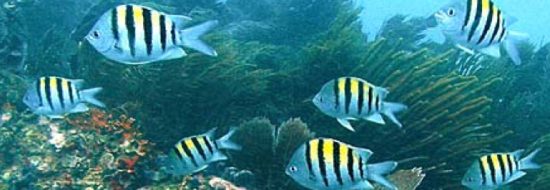

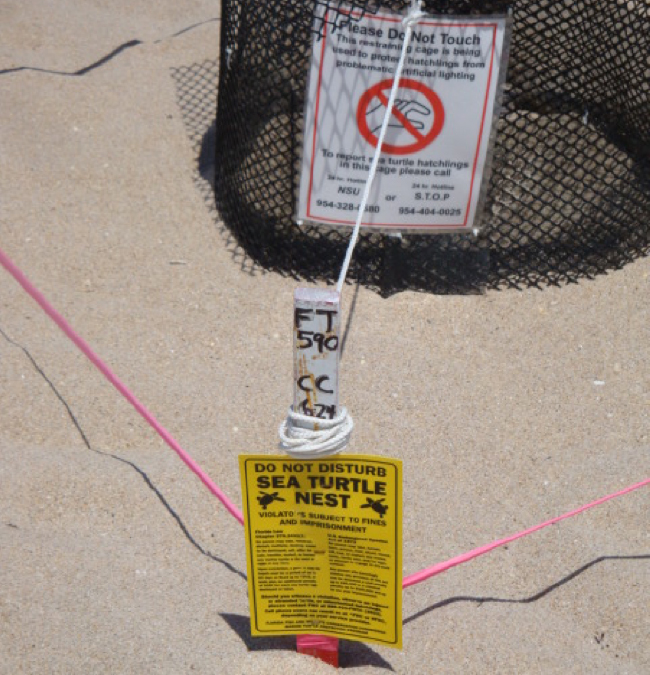
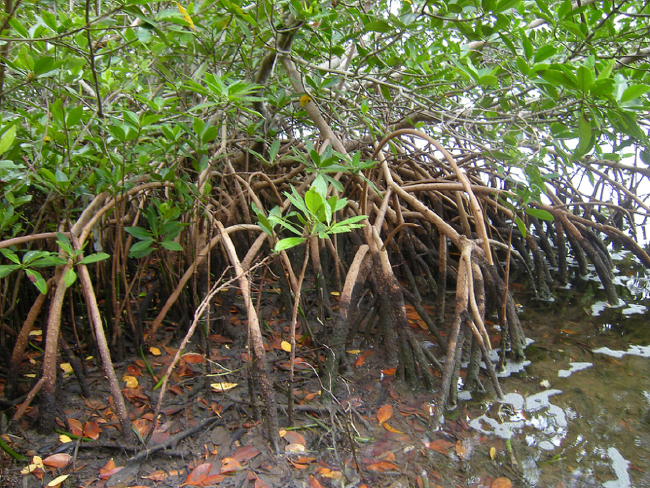
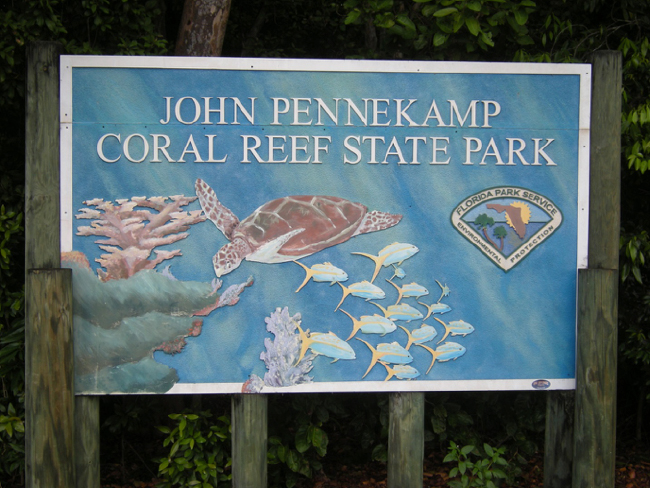
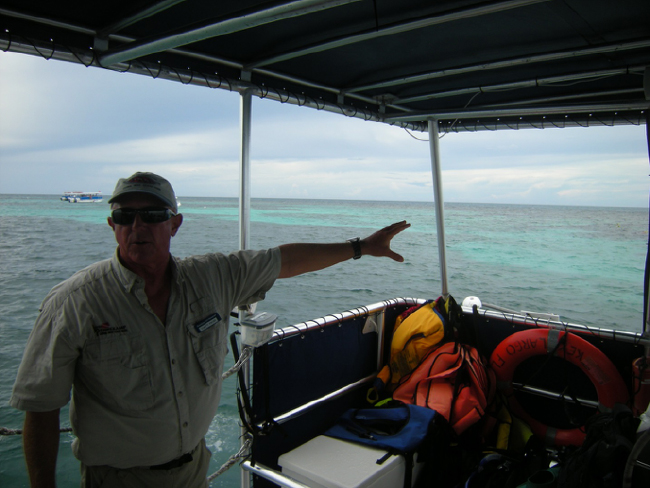
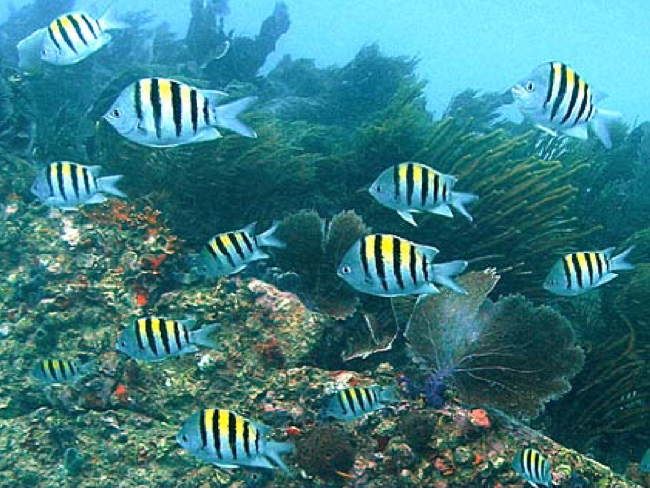
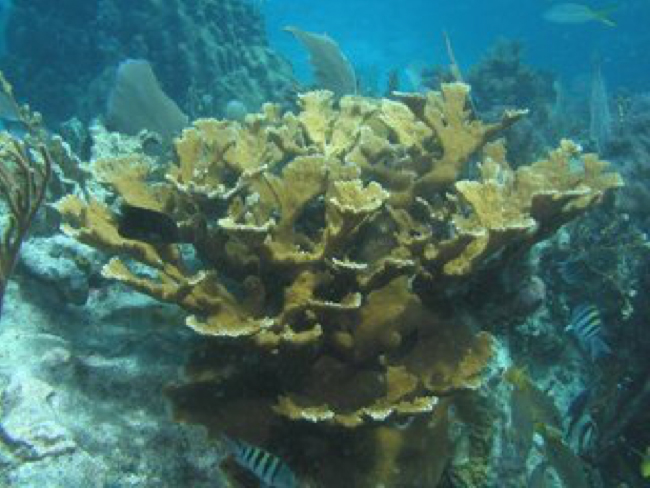

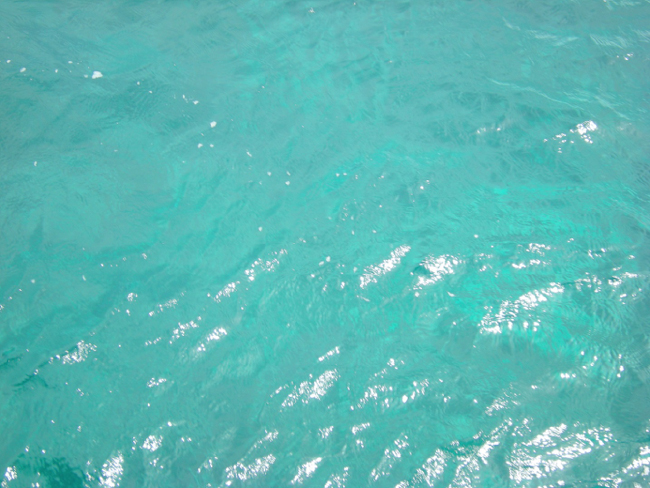



August 22, 2016 7:11 pm
Good one, Bruce.
so are you saying in effect that since there’s always been change, as Jeannine Cavender-Bares says, biodiversity and the planet will be fine, so that all the panic with global climate change is while too bad, kind of by the by? whatever, planet earth is too strong, and the only issue is whether we can survive ourselves?
glad you made it back to the anthropocene!
michael